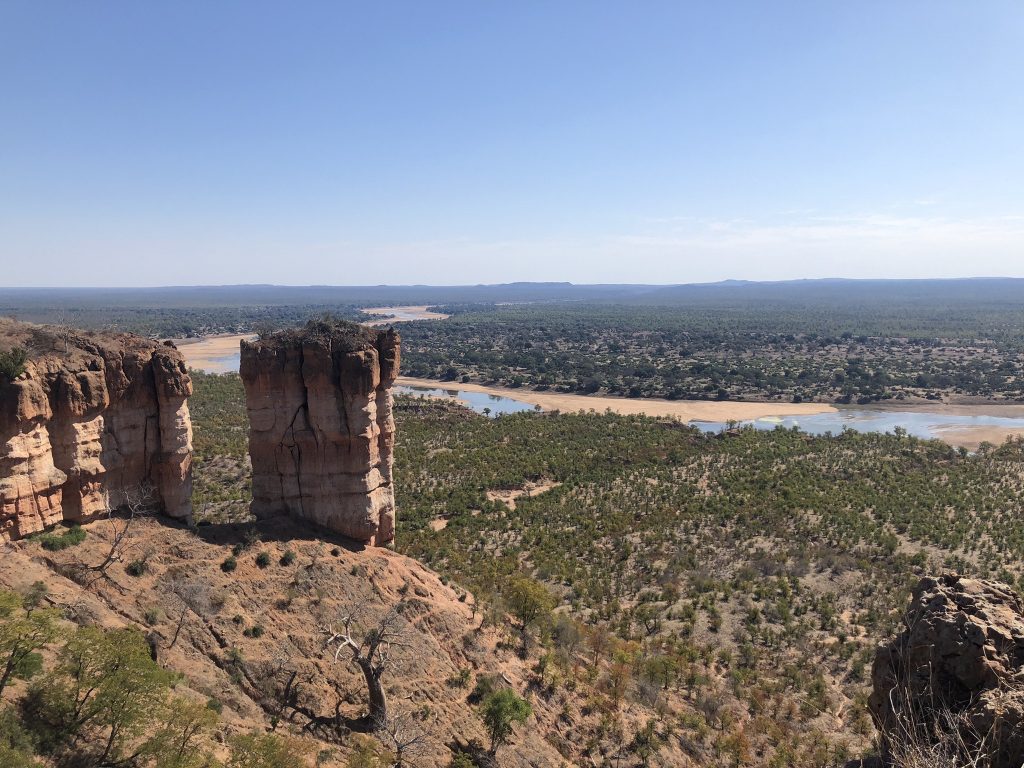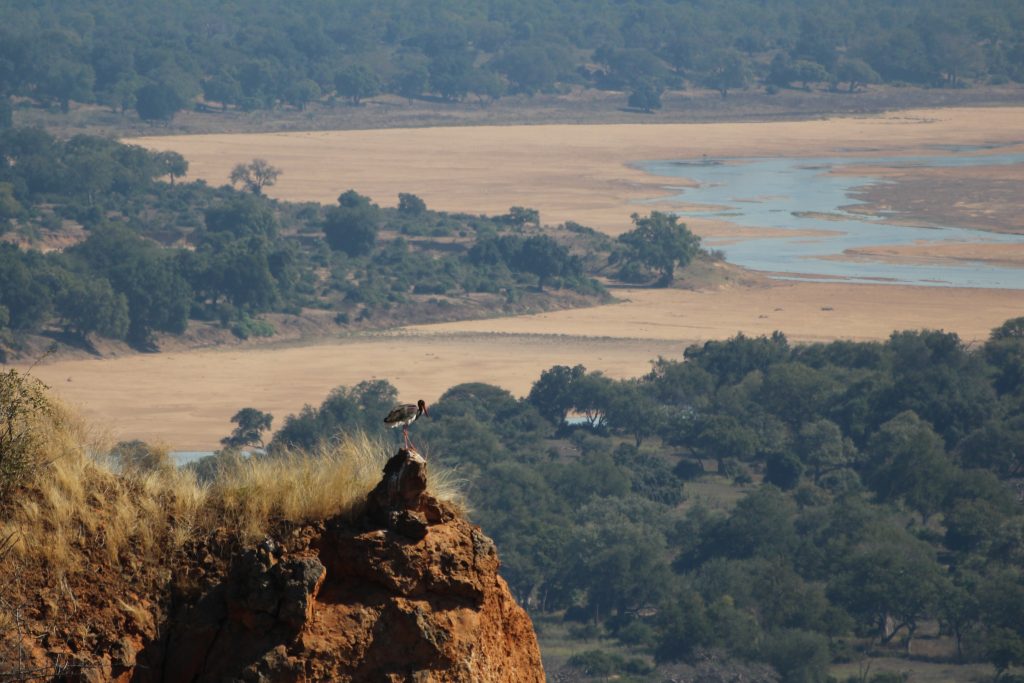Article and Images Eryn Taylor-Freeme
“I have been bewitched by it.”- Colin Saunders in his book, ‘Gonarezhou’.

The low whir of a hesitant zip causes a momentarily lull in the gentle chirp and coo of nature’s alarm. Percolated coffee bubbles atop the dying embers of last night’s fire. The sun yawns in a distorted yellow pall, stretching out the aches of the night in smears of rose and peach. A Land Rover’s sooty roar frightens the shy dawn and eager eyes, still touched by the Sandman, wind up the glass shields against a chilly breeze as the vehicle bumps down the road in search of early morning game.
Locked into the southeast corner of Zimbabwe, bordering Mozambique, is the country’s second largest national park- Gonarezhou. ‘The Place of Elephants’, covering over 5000km2, is only rivalled in size by Hwange, and is home to over 11 500 of the grey giants. Its potential, previously shrouded by the neglect and abuse of both colonial and post-colonial governments, is unfolding into an ecological haven under the co-management partnership between Zimbabwe Parks and Wildlife Management Authority and Frankfurt Zoological Society (FZS). Its monumental growth over the last 2 decades is also largely due to its place in the Greater Limpopo Transfrontier Park (GLTP)- the largest blanket conservation area in the world, covering parks in Mozambique, South Africa and Zimbabwe.
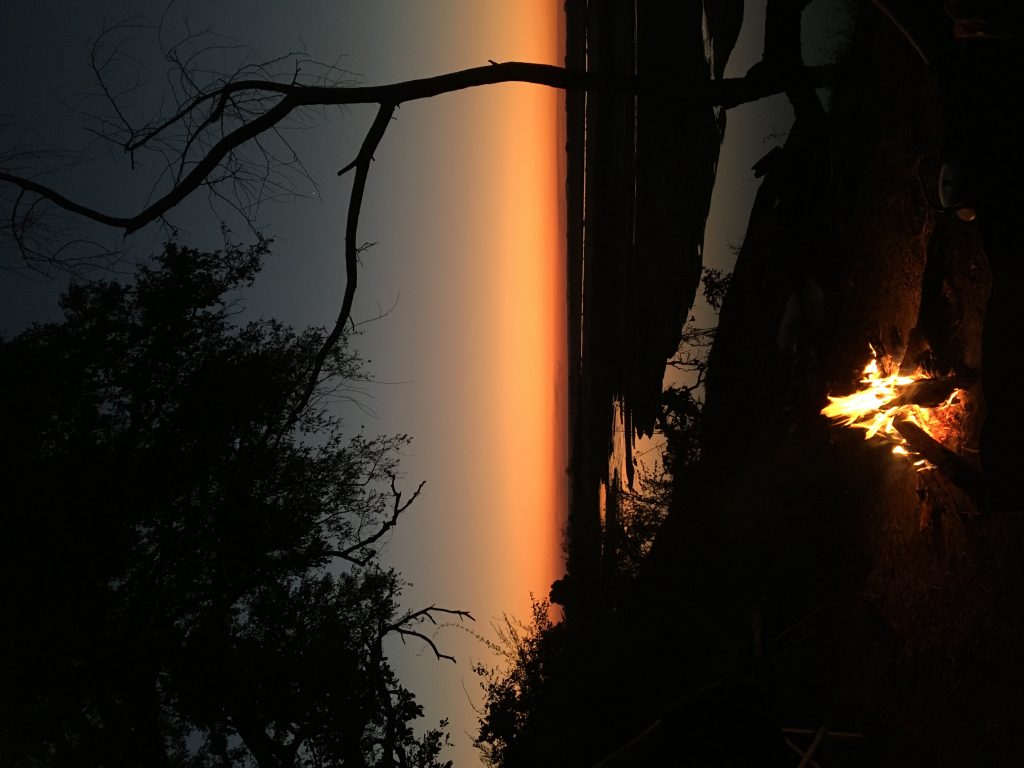
The late Dr Colin Saunders, conservationist and ex-chairman of National Parks and Malilangwe Trust, referred to Gonarezhou in the early 2000s as “just waiting to take its place as one of the principal jewels in the crown of our National Park system”. The park has since been polished and begins to glisten as a gem with an unspoilt and wild beauty. It is undeniable that Zimbabwe is encrusted with other priceless stones, such as Mana Pools, Hwange and Victoria Falls, but what separates Gonarezhou as the country’s rising golden park is its unique interconnection of rivers, diverse terrain and raw wilderness.
Gonarezhou is the only park in Zimbabwe hugged by two major rivers, the Save in the North and the Mwenezi in the South. The Runde parts the Save on the eastern boundary and runs through the heart of the top of the park, but unlike the Zambezi River, the Runde is not a boundary. Tourists can travel unrestricted, crisscrossing its banks at designated areas, experiencing the sand drift, and wholly embracing the wilderness on either side. When faced with bridging the banks, to shift from crippling anxiety at the water’s unknown depths to euphoric frolicking in its shallow waves with a beer in hand, like the river is an old friend, when the cross is completed, is a return to wildness and wholesome travel that is so rare in commercialised tourism.
Gonarezhou is place of great distances with everchanging remarkable terrain: forests of arthritic baobabs stand to attention saluting the lowveld; a prehistoric maze of Ilala palms where seeing a pterodactyl seems more likely than a turaco; slated gorges gripped by aloes above heights that plunge toward rapids ceaselessly carving into grey rock; from stunted mopane shrub to an animated oasis of mahoganies, sycamore figs and nyala berry trees; flushes of crimson, yellow and white from Sabi stars, cassia and knob thorns spontaneously appear throughout the year in a spectacular, unpredictable firework show. The park’s dimension and environment make each visit completely different.
It is impossible to truly take in the enchanting nature of the destination attempting to cover the entire park in one visit, a feat only achievable with significant experience and weeks to donate to its soils. Instead, stick to either the North or South at any one time as each harbours its own topography and array of inhabitants. However, for a virgin traveller, we suggest making your maiden adventure to the top of the park where there is usually more game and environmental diversity.
Depending on your accommodation preference and desired travel experience, Gonarezhou offers chalets, tented camps, and campgrounds both with and without ablution blocks, but all are self-catered. To return to the soul of Gonarezhou and feel the closest to its pulse, there are several exclusive camps, along the rivers, that only supply a firepit and long drop. Campers are required to haul their own water from the nearby source, carry their own drinking water, and leave with everything they came with, including trash, and be completely self-reliant. The centre of the park- the unforgivable wilderness- also has camping grounds scattered throughout and is pockmarked with several good pans, especially Lion and Ghorwe, which bubble with magnificent wildlife after good rains and support the fascinating cycle of a luminescent fish that is yet to be found anywhere else in the world. However, the area is harsh, barren and more often dry so leave it to those travellers with the untamed wild at heart.
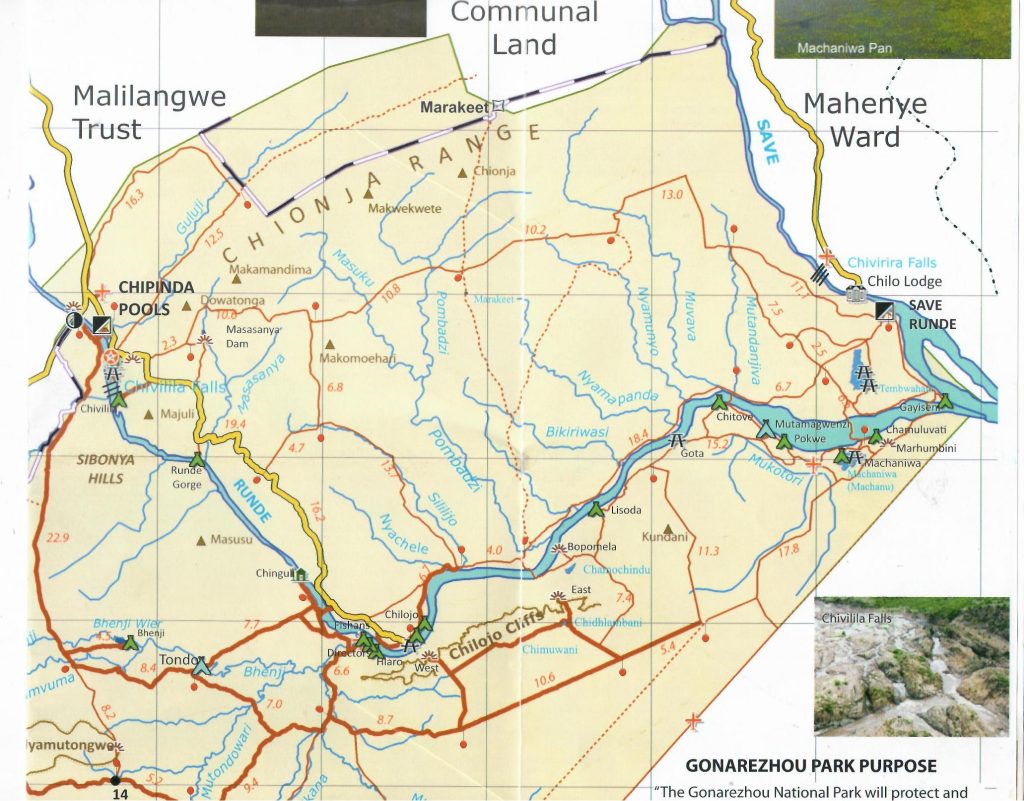
Since travellers are entirely self-reliant, an ideal visit exploring the North is between a week and 10 days. On entering the park stay at Chipinda Pools tented camp, it is close to the park’s entrance and is a short drive from several worthwhile features. The pool, the area’s main attraction, is a birder’s paradise, swirling from the towering legs of Saddled-billed storks and Goliath herons, while kingfishers beat their wings in a blur over ripples radiating from bobbing geese. It is often encircled by herds of elephants and antelope lapping at the home of hippos and crocodiles. The Chivilia falls, a tumbling cascade of thundering white, is not far down the Runde. It is also possible to hire a guide from Chipinda for travellers less confident.
Continue into the park following the river downstream to perhaps Gonarezhou’s most famous feature- the Chilojo Cliffs. The eroded sandstone hill carved over the ages by the Runde exposes a face of horizontal bands of alternating brown, orange, yellow and pink, and is guarded by a lone tower moulded by wind and rain. Any trip to Gonarezhou is incomplete without seeing this spectacular geological formation so often immortalised in paintings. There are several exclusive grounds at its base, Directors camp being the most popular.
While the cliffs demand submission from the riverbed, the summit grants sweeping views of the snaking Runde and the expanse of the park. The peak is accessible either by a road that crosses the river at Chipinda or one just before the cliffs. If you choose the former, consider a night at Benji weir, especially during a full moon. The roofed platform grants guests a night in the open where silver rays illuminate the nocturnal antics around the spring. This, and the other starbed camps, are also only equipped with a bush loo.
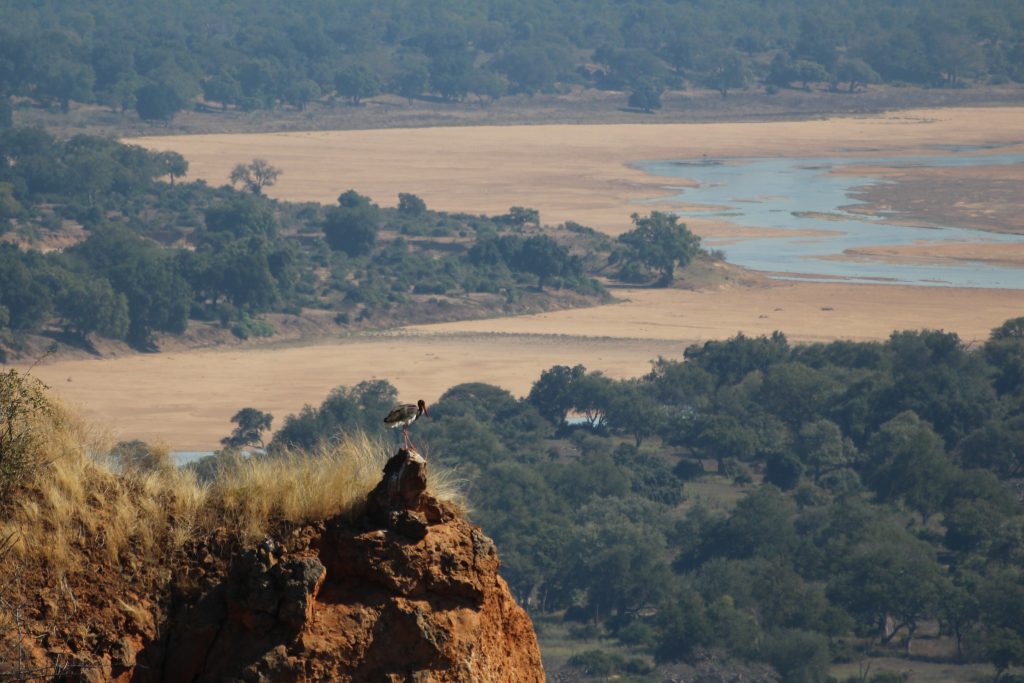
You can follow the Runde east on roads running parallel to its banks on either side, and there are many beautiful scenes and campsites along its shores. You are bound to run into herds of elephant round obscure corners, and while the wrinkly beasts are worshipped for their intelligence, family-oriented tendencies and gentle mannerisms, these mammals are much wilder than their passive relatives in Mana Pools and tend to pick a fight with trespassing vehicles, a trait likely adopted from whispers passed down from years of torment during the ivory trade.
The Runde-Save confluence, the lowest point in Zimbabwe at 400ft above sea level and interesting spot to visit, was a likely access point for Arab dhows trading with Zimbabwe’s natural riches and is the site of many stories, although unproved, of a mooring station for participants in the slave trade. There are accounts of alleged metal rings used to dock dhows on the rocks along the bank, but none are yet to be found.
What is certainly not fable in this area are the beauty of two pans, Tembwehata and Machiniwa. Pulsing and breathing life from all branches of the animal kingdom after a good season of rain, these depressions of crusted mud morph into gleaming pools sporting a natural show that demands an entire day to sit and spectate at each.
To complete your trip through the north of the park, loop back along the river heading for Masassanya Dam. Between the Chilojo Cliffs and the Dam is a fenced area of rhino country that if you’re lucky may grant you a glimpse of the newly relocated species. However, if you miss the armoured mammals in the golden spears of adrenalin grass, a second chance presents itself on exiting the park through Malilangwe. On Masassanya’s shore blends Masasani Mananga lodge, one of the three Mananga camps inspired by the Shangaan culture- the original farming tribe in the area. The lodge is the perfect place to spend your last evening in the park.
The descending sun melts into the horizon, liquidating the earth into an inky purple. The sticky drip of sweat left from an unforgiving sun is wiped clean and replaced by the wandering beads rimming a cold gin. Shadows play just beyond licking campfire flames, coaxed by laughing voices pregnant with the tales of the day’s antics: an exaggerated close call; slumbering royals of the savannah; elusive skimmers glide, their bellies flush with the silver lake. The howl of a jackal competes with a hyena’s whoop, and the whizz of the last closing tent punctuates the end of another day in glorious Gonarezhou.
